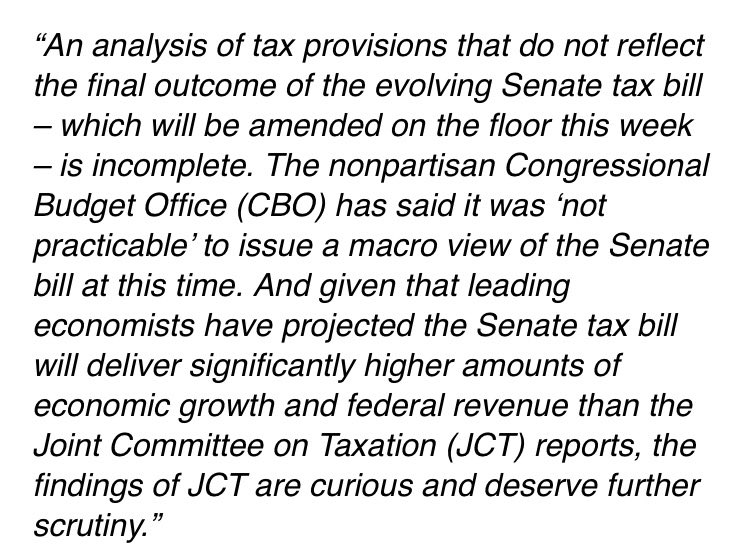Republican Tax Cuts And The National Deficit: A Fact-Based Assessment

Table of Contents
The 2017 Tax Cuts and Jobs Act: An In-Depth Look
The 2017 Tax Cuts and Jobs Act, spearheaded by the Trump administration, significantly altered the US tax code. Understanding its impact requires a thorough examination of its projected versus actual outcomes and the distribution of its benefits.
Initial Projections vs. Actual Results:
The Trump administration projected robust economic growth spurred by the 2017 tax cuts, leading to increased tax revenue that would offset the initial revenue loss. However, these projections proved overly optimistic. The Congressional Budget Office (CBO) and the Tax Policy Center (TPC), independent organizations, offered more cautious forecasts, which ultimately proved more accurate.
- Projected GDP growth rate: The administration initially projected significantly higher GDP growth rates than materialized.
- Projected revenue increase: Actual revenue increases fell far short of the administration's projections, resulting in a larger-than-anticipated budget deficit.
- Impact on corporate investment and job creation: While some corporate investment increased, the job creation impact was less substantial than initially claimed. The boost to corporate profits did not automatically translate into widespread wage increases or significant new hiring.
The discrepancy between projections and reality highlights the challenges inherent in predicting the complex interplay of economic factors following large-scale tax reforms. The failure to accurately predict the revenue impact emphasizes the need for more realistic and data-driven projections in future tax policy debates.
Distribution of Tax Benefits:
A crucial aspect of evaluating the 2017 tax cuts is analyzing who benefited most. Data reveals a disproportionate distribution of tax benefits, favoring corporations and high-income earners.
- Percentage of tax benefits received by different income brackets: The majority of the tax cuts' benefits accrued to the top 1%, exacerbating income inequality.
- Impact on income inequality: The tax cuts contributed to a widening gap between the rich and the poor, a concern raised by many economists and social commentators.
- Analysis of corporate tax rate reductions and their effect on investment and wages: While corporate tax cuts were intended to stimulate investment and raise wages, the evidence suggests a more limited impact than anticipated, with a substantial portion of the tax savings going to increased shareholder returns rather than increased wages or investments.
The Impact on the National Debt and Deficit
The 2017 tax cuts had a profound impact on the national debt and deficit. The combination of reduced tax revenue and increased government spending significantly contributed to the growing fiscal imbalance.
Increased Deficit Spending:
Following the implementation of the tax cuts, the national deficit experienced a substantial increase. This increase is not solely attributable to the tax cuts, but they undeniably played a major role.
- Year-over-year changes in the national deficit: Charts clearly illustrate a sharp rise in the deficit following the 2017 tax cuts.
- Comparison of deficit levels before and after the tax cuts: A direct comparison reveals the substantial impact of the tax cuts on the national debt trajectory.
- Contribution of tax cuts to the overall national debt: Studies consistently demonstrate a significant contribution of the tax cuts to the escalating national debt.
Long-Term Fiscal Sustainability:
The escalating national debt poses significant long-term risks to the nation's fiscal sustainability. The consequences of unchecked debt accumulation could include reduced economic growth, increased interest rates, and a diminished capacity to respond to future crises.
- Debt-to-GDP ratio analysis: A rising debt-to-GDP ratio indicates a growing vulnerability and potential for future economic instability.
- Potential impacts on interest rates and future borrowing costs: Higher debt levels could lead to increased interest rates, making future borrowing more expensive.
- Discussion of potential fiscal policy adjustments: Addressing the growing national debt requires careful consideration of various fiscal policy adjustments, including spending cuts, revenue increases, or a combination thereof.
Alternative Economic Perspectives and Analyses
The impact of the Republican tax cuts can be viewed through different economic lenses.
Supply-Side Economics vs. Keynesian Economics:
Supply-side economics advocates argue that tax cuts stimulate economic growth by incentivizing investment and production. Keynesian economists, however, contend that tax cuts, particularly during periods of low economic activity, may not sufficiently stimulate demand and could exacerbate the deficit without generating corresponding economic benefits.
- Key arguments of supply-side economics: Focus on stimulating aggregate supply through tax cuts, leading to increased investment and job creation.
- Key arguments of Keynesian economics: Emphasis on managing aggregate demand through government spending and fiscal policy interventions to stabilize the economy.
- Citations to relevant economic studies and research: Numerous economic studies support both viewpoints, demonstrating the ongoing debate about the effectiveness of supply-side tax cuts.
Conclusion:
This article presented a fact-based analysis of the impact of Republican tax cuts on the national deficit, focusing primarily on the 2017 Tax Cuts and Jobs Act. We examined its initial projections versus actual results, the distribution of tax benefits, and its significant contribution to the increased national debt and deficit. Different economic perspectives were considered to offer a more complete understanding of this complex issue.
Understanding the effects of Republican tax cuts on the national deficit is crucial for informed civic engagement. Continue your research by exploring reputable sources like the CBO and TPC, and engage in thoughtful discussions to develop a well-rounded perspective on the long-term implications of Republican tax cuts and their influence on the national debt and fiscal policy. Further analysis of Republican tax cuts and their influence on the national deficit is necessary for responsible governance and effective economic policymaking.

Featured Posts
-
 Juergen Klopp Real Madrid In Yeni Teknik Direktoerue Olabilir Mi
May 21, 2025
Juergen Klopp Real Madrid In Yeni Teknik Direktoerue Olabilir Mi
May 21, 2025 -
 1 231 Billion Recovery Pledged From 28 Oil Companies
May 21, 2025
1 231 Billion Recovery Pledged From 28 Oil Companies
May 21, 2025 -
 Paulina Gretzkys Leopard Dress A Soprano Inspired Look
May 21, 2025
Paulina Gretzkys Leopard Dress A Soprano Inspired Look
May 21, 2025 -
 Little Britain Cancelled Why Gen Z Loves It
May 21, 2025
Little Britain Cancelled Why Gen Z Loves It
May 21, 2025 -
 Fratii Tate In Bucuresti Parada Cu Bolidul De Lux Dupa Retinere
May 21, 2025
Fratii Tate In Bucuresti Parada Cu Bolidul De Lux Dupa Retinere
May 21, 2025
